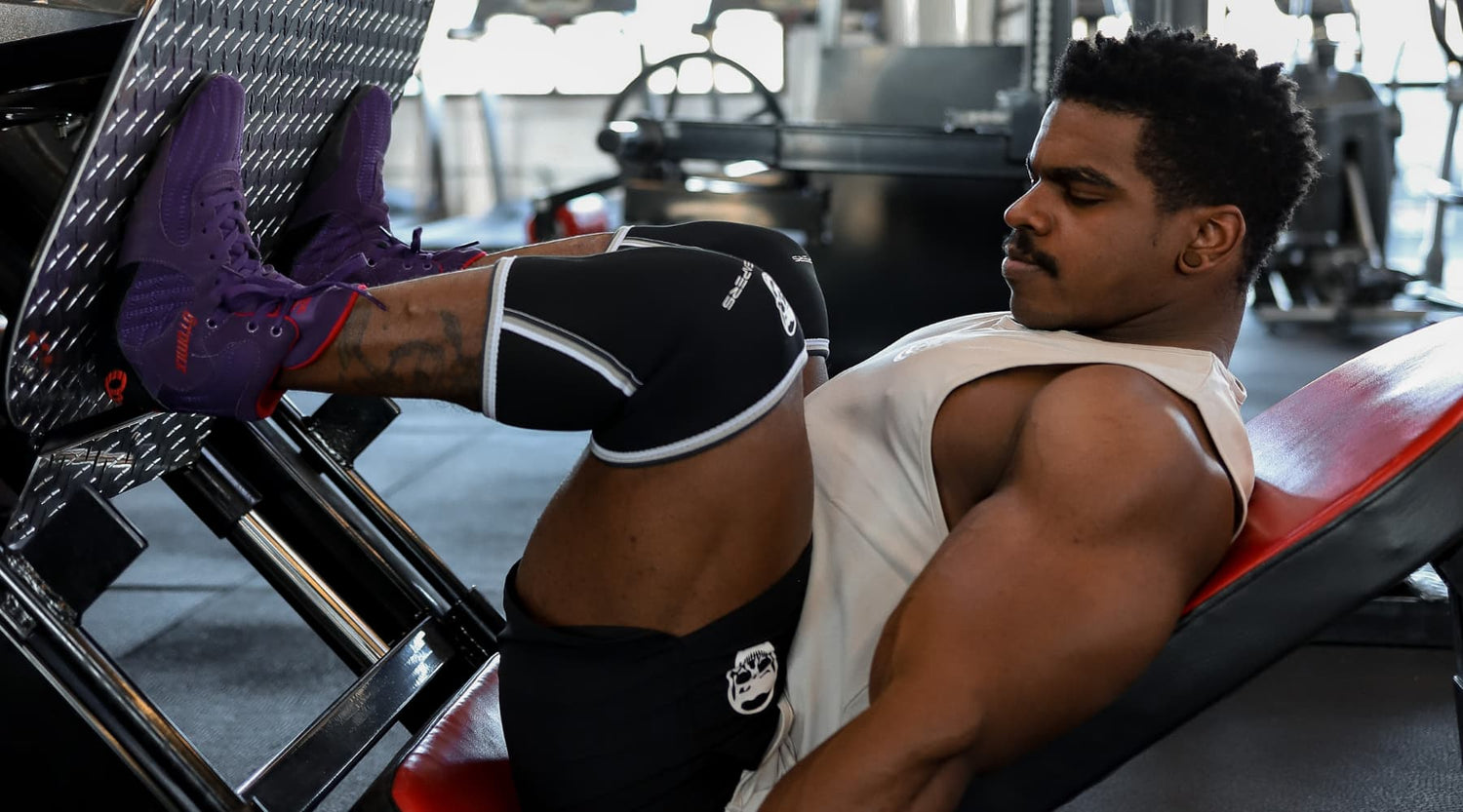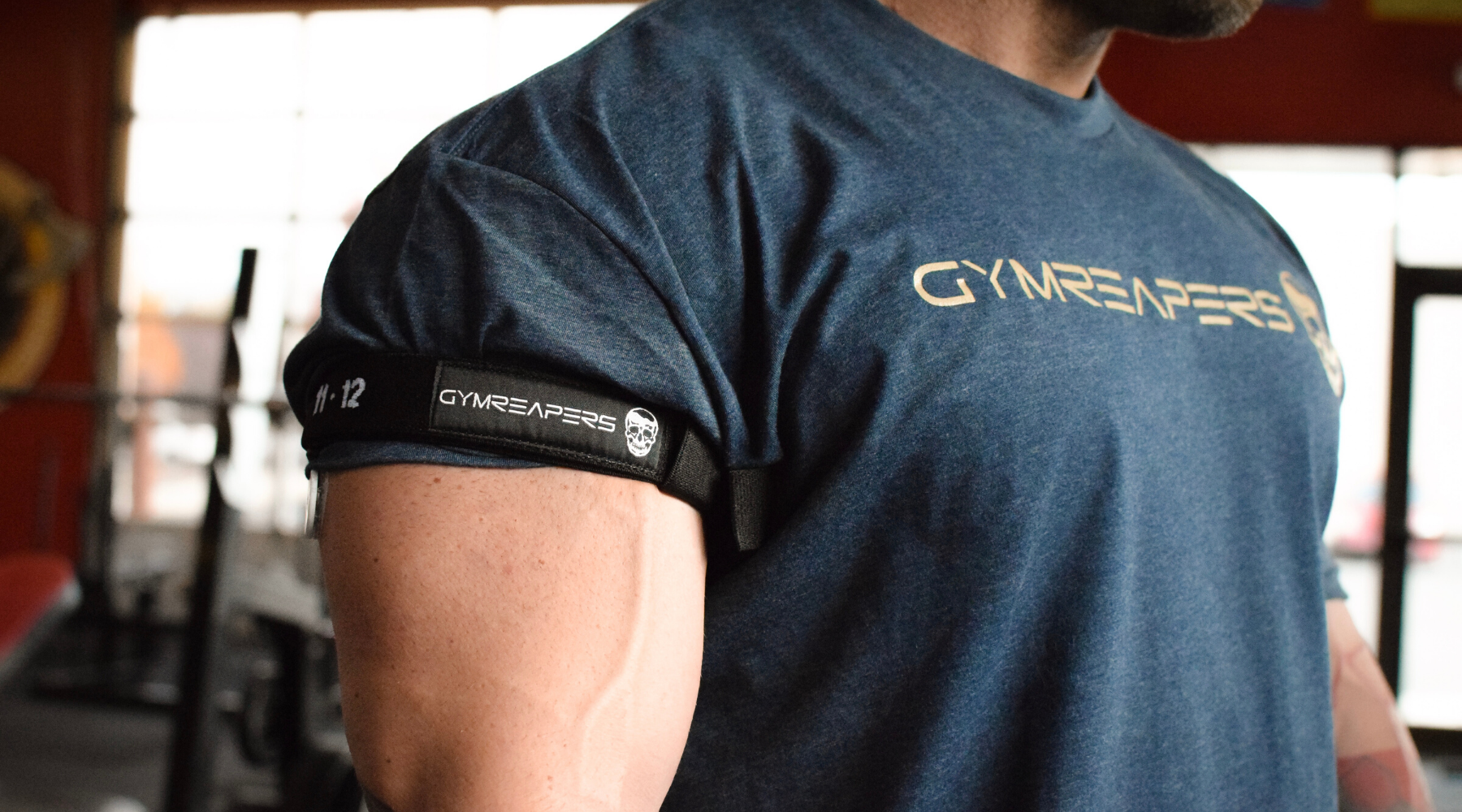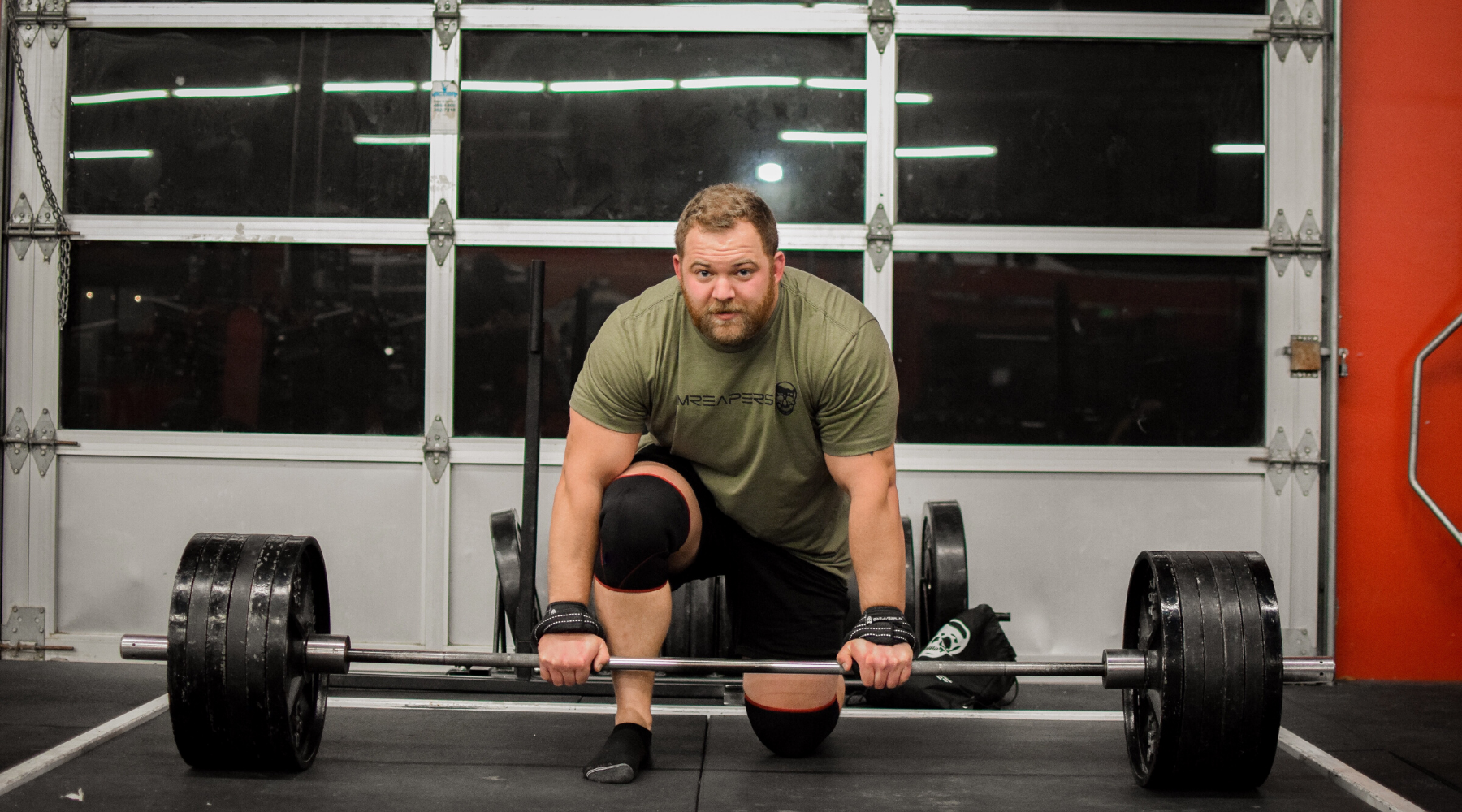It may sound a little cliché, but you don’t realize how much you use your knees until you hurt one (or both) of them. Between my own Brazilian jiu-jitsu (BJJ) induced knee injuries and training countless clients with dodgy knees, I’ve managed my fair share of knee issues for both myself and others.
What follows is a list of seven things you can do to manage, alleviate, and avoid knee pain. Knee pain can stem from many different causes from Arthritis to a torn ACL.
So if you suspect you have a serious issue with your knees(s) make sure you consult a doctor. This article isn’t meant to diagnose or treat any serious injuries. Rather, it’s meant to give you some tips and tools to alleviate pain for what I’ll refer to as “cranky” knees.
Cranky knees could be a few things. Maybe you hurt your knee back in college and even after physiotherapy it’s never really felt quite right when you lifted. Maybe you don’t perform leg workouts because every time you squat your knees ache.
Maybe your knees just started randomly hurting the exact second you turned 40. Or maybe you’ve been training a bit too hard so your joints are a bit beat up.
Either way, if you’re trying to work around historically dodgy knees, or are just having some niggling sort of aches and pains, here are steps you can take to alleviate pain, and still train hard.

1) Are your glutes are doing their job?
Many of us in the industrialized world sit too much. Even those of us who lift. You may lift for a few hours a week, but what are you doing for the rest of the time? Probably sitting at a computer or smartphone.
When it comes to the glutes it’s very much a “use it or lose it” situation. When you sit too much your glutes get “sleepy”. Other muscles start to compensate for what the glutes should be doing. Bret Contreras (known as the “glute guy”) coined the phrase “gluteal amnesia” to describe this phenomenon of forgetting how to activate your glutes.
You can see how this is a problem. The glutes are functionally one of the most important muscle groups in the body because of their key role in hip movement, namely hip extension and hip abduction. They’re also the biggest, and therefore the strongest, muscle group in the body.
Human power and movement all stem from the hips. Paul Anderson, arguably the strongest man of all time, said, "The guy with the biggest butt lifts the biggest weights". And he was right. Big strong glutes equal power, strength, and athleticism.
Naturally, such a key muscle group will influence how the knee functions. Now, you’re probably well aware that sitting for too long will leave you with a sore lower back. However, sitting too much also affects knee function by way of the glutes. Because the glutes control and stabilize the hip joint, this means improper glute function or activation can travel down the kinetic chain and affect the knee.
This is all to say, you need to start paying more attention to your butt when it comes to exercise. Here’s a simple exercise flow to help get your glutes fired up and moving properly to help take some stress off your knees.
- Standing Glute Squeeze - 30 seconds
- Glute Bridge - 60 seconds
- Quadruped Hip Extension - 60 seconds per side
- Side-Lying Clamshell - 60 seconds per side
Remember though, you have to focus on building a strong mind-muscle connection here to help rewire your body’s reflex to use the glutes properly. If you just go through the motions, you’re not going to get any benefit from these exercises.
Really try and feel your glutes working as hard as you can at every moment during these exercises. You can do this routine as a stand-alone movement break every day, or as part of your active warm-up before a training session.
2) Hit the hamstrings hard
The hamstrings are another often-neglected muscle group. However, the hamstrings aren’t nearly as complicated as the glutes. The hamstrings serve two basic functions: they aid in hip extension and flex the knee. These two functions are key for stabilizing the knee and making sure the kneecap is tracking properly.
Basically, most common lower body activities are quad (front of your thigh) focused. Squats, lunges, leg press, walking upstairs, etc. all use the quads more than the hamstrings, especially the way they’re commonly performed. When the quads get disproportionately strong to the hamstrings, the imbalance can lead to issues.
Make sure, throughout your training week, you get a good amount of Romanian deadlifts, and standing/sitting machine hamstring curls in. You should notice your knee feels noticeably better after a few sets of either of the above-mentioned exercises.
Plus, hamstring dominant exercises will allow you to keep pushing your workouts hard without aggravating your knees. I’ve trained many clients with cranky knees who couldn’t squat any challenging amount of weight. However, they could still push deadlifts and kettlebell swings hard. That way, they’d still achieve a training effect and feel like they worked out.
Do you have tight hamstrings?
3) Stay away from painful movements and ranges of motion
Working through pain is a recipe for more pain. Dr. Stuart McGill, leading expert on back pain, talks about something called “pain sensitivity” which is integral to how he gets patients out of pain. We’re going to apply this same concept to knee pain.
Let’s say you do a lunge and halfway down, your body sends a pain signal to your front knee. This means your knee is very sensitive to pain in that position, with that movement, or both.
This pain sensitivity can be decreased if you’re smart about it. Think of your knee pain like a scab. If you push through painful ranges of motion, you’re essentially ripping off the scab, prolonging the healing process, and increasing your pain sensitivity.
A better way to handle this is to move the knee, but don’t go into the pain zone. Over time, your pain sensitivity decreases, and you find you can go into a larger range of motion without pain. The trick is to not pick at the scab.
For example, I’ve had clients who couldn’t go past a quarter squat without pain. So we started by just doing quarter squats, squatting just shy of where it would start to feel painful. Over time, the pain-free range of motion increased. So the client could progressively squat lower and lower without pain.
The takeaway here is to be hyper-aware of what movements and ranges of motion trigger a pain response. Avoid those ranges of motion, with the intention of gently increasing the range of motion as your pain sensitivity allows you to.

Buy 7mm Knee Sleeves
4) Foam roll the IT band and gentle mobility work
The IT band consists of connective tissue, called fascia, that runs along your outer thigh from your hip to your knee. Given the insertion points of the IT band, the IT band takes a lot of abuse, especially from runners, jumpers, and squatters. Naturally, a cranky IT band can mess with the knee because of its role in knee stabilization.
Foam rolling the IT band can help to hydrate the fascia as well as temporarily increase the range of motion. Both of these aspects will help to alleviate knee stress.
Now, when rolling out the IT band, you don’t need to put yourself in agony. When it comes to massage and foam rolling, people tend to think harder is better, but this isn’t the case. Just give the fascia a gentle massage.
A little massage pain is ok, but don’t go overboard. The last thing you want to do here is to use a roller that’s so hard it irritates and aggravates the tissue. Kind of defeats the point.
After you’ve foam rolled each side for at least 30 seconds, perform some really gentle mobility exercises. Choose exercises that move the knee through your newly available range of motion, but don’t put any load on the muscle or joint i.e. no squats. This will help blood circulate to the tissues and decrease pain sensitivity.
5) Use a pair of high-quality knee sleeve for weightlifting
Using a good knee sleeve for weightlifting can make a huge difference in preventing joint aggravation. The knee sleeve gives your knee more support providing joint stability and protection. To see how this works we need to look at the anatomy of the knee joint.
The knee is what’s called a hinge joint. This means it moves like a hinge in just two directions. Unlike the shoulder or hip which can move in many directions, the knee is only meant to extend or flex. While the knee can take some motion outside of this plane, it’s very minimal.
The further the knee moves out of this forward/backward plane, the more at risk the joint is. Wearing a good knee sleeve helps to keep the knee stabilized and supported so it doesn’t go outside of its ideal plane of motion.
This is why, when you wear a knee brace, walking gets easier, because the brace stabilizes the knee and keeps it out of pain-sensitive ranges of motion. This is good not just because it means you’ve regained some mobility and decreased pain, but because this means you’re at less risk of “picking the scab”, which means the pain will go away faster.
Keeping the knee tracking properly is especially important under load. Maybe you can do a bodyweight squat with your knees being a little bit wonky and it’s fine. However, the more pressure you put on the joints in that poor position, the riskier it becomes.
So, having a knee sleeve while you’re squatting can help to provide some quality insurance because it helps put your knee into a good movement pattern making the exercise safer. Plus, if you can still squat it means you can continue to fortify the knee and make strength gains.
Make sure you invest in high-quality knee sleeves. Buying a knee sleeve that moves around too much or doesn’t support the knee properly is annoying and a waste of money. Having to readjust your knee sleeve mid-set is just frustrating and will get in your head a bit.
So you want to make sure you get a proper knee sleeve that’ll give you peace of mind when you have tons of weight on your back.

6) Stop icing your knees
The advice to ice is quite outdated. However, because it’s “common knowledge”, the myth has unfortunately stuck around. And look, if it’s something you’ve been told by your parents, coaches, friends, whoever, the idea that icing works is going to be burned into your brain. So you may already be feeling some resistance to the idea that icing is counterproductive. But hear me out.
The only reason we have this idea to ice an injury is because of a scientist named Dr. Gabe Mirkin. In 1978, his best selling Sportsmedicine Book popularized the RICE acronym (Rest, Ice, Compression, Elevation). And it stuck because it did provide temporary relief from an injury. So people latched onto it as obviously being the right thing to do.
However, science is always seeking to further our understanding of things. And now, Dr. Mirkin, the exact same scientist who came up with the idea, after a few more decades of research, is saying you shouldn’t ice.
People only ice their joints because of Mikin’s research. So by that logic, if Mirkin says, “We did loads more studies and through more research found our recommendations were not correct” people ought to listen and correct their stance, just as he humbly did.
Here’s how it works. When there’s an injury, there’s an inflammatory response by the body. This inflammatory response is necessary. We evolved this response to improve the healing process.
Icing does, in fact, decrease inflammation. However, that’s not necessarily a good thing. Because decreasing inflammation, while giving temporary relief, slows the healing process thus prolonging the time you’re in pain. The takeaway is to refrain from icing your knees because, despite intuition, it actually is counterproductive.
7) Learn to goblet squat with perfect form
A properly performed goblet squat is one of the best things you can do for your knees because it simultaneously builds strength and mobility in the hips, knees, and ankles — all key areas for happy knees.
In addition, it’s a great exercise for teaching proper movement mechanics. Holding the load in front of you immediately forces the abs to stiffen up. This helps ensure a rigid, neutral spine throughout the exercise.
Placing the load in front also has the effect of allowing a more tall, upright squat posture. This, in combination with ab stiffness lets you sink lower into the squat both stretching and strengthening the hips.
The more upright posture also means the knees will translate forward helping to build more flexibility in the ankle and range of motion in the knee. It’s hard to think of a bigger bang for your buck exercise in terms of movement patterning.
Yet another great thing about the goblet squat is that it’s practically self-teaching. You do still need to be focused when doing the exercise so as to perfect your movements. However, the location of the load/weight automatically corrects many of the balance, coordination, and mobility issues that lead to the most common and glaring squat mistakes.
If you have knee pain, it could be from poor mechanics. That said, even if poor mechanics aren’t the problem, practicing good mechanics is never a bad thing. The act of learning proper squat mechanics can in and of itself be restorative for the joints because:
- You potentially stop doing whatever is aggravating the joint.
- You develop the reflex/muscle memory of doing the movement properly.
- You strengthen the joints and tendons.
Basically, integrate goblet squat practice into your warm-up. Do them often and your joints will repay you. When you’re doing these, don’t forget tip #3 from this post and stay out of painful ranges of motion.
The Takeaway
This list is by no means comprehensive because knees can ache for various reasons. What I’ve tried to provide are some techniques, guidelines, and tips you can use to alleviate, workaround, and prevent further knee pain. Because knee pain is a drag, but it doesn’t have to stop you from training. You just have to be smart about it.
Pains and aches are all part of training hard. They will happen from time to time. If you’re clever about dealing with these and if you leave your ego at the door, these niggles and aches won’t escalate into something you need physiotherapists for.
References
- About Dr. Stuart McGill - Professor emeritus, University of Waterloo. (2022). Retrieved 14 December 2019, from https://www.backfitpro.com/about-us/













Leave a comment
All comments are moderated before being published.
This site is protected by hCaptcha and the hCaptcha Privacy Policy and Terms of Service apply.